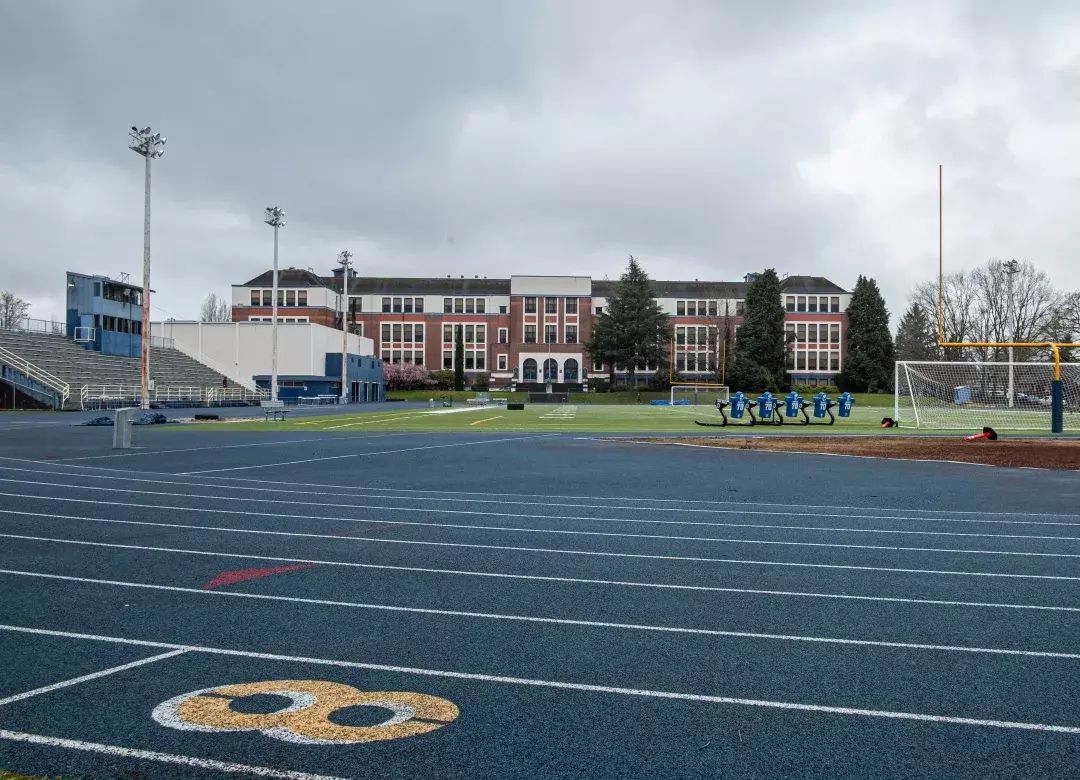Enrollment at the State's Biggest School District Is Down 4.1 Percent

As at many Portland Public Schools, total enrollment at Jefferson High is down this fall, with 588 students compared to 620 in October 2020 and 641 in October 2019. Some students from Jefferson's neighborhood are attending the district's new K–12 Online Learning Academy.
Image: Michael Novak
October 2021 enrollment numbers just released by Portland Public Schools show an overall K–12 enrollment decrease of 4.1 percent compared to last fall, following the 3.5 percent drop between fall 2019 and fall 2020. In the five years preceding the pandemic, PPS enrollment increased, on average, by 0.5 percent per year, though the gains tended to come in older grades while kindergarten enrollment had been steadily declining. As of October 1, PPS reports 45,005 K–12 students, down from 46,937 the year before, and down from the average of around 48,500 in the five years preceding the pandemic.
The total includes children enrolled in neighborhood schools, language immersion, focus options, alternative programs, the five charter schools that operate as part of the district, and the new-for-this-year PPS Online Learning Academy. Aside from changes related to the pandemic, which could include increased interest in private schools, online options, and other programs, enrollment totals are affected by changes in housing patterns and affordability, birth rates, and other demographic shifts. Most recent forecasts from the Portland State University Population Research Center have predicted a decline in the longer term for PPS enrollments. The number of students enrolled in a district helps determine how much the district receives in state funding, so a sustained decrease has long-term implications for school budgets and staffing.
Of the 592 students listed in the online academy, 15.4 percent identify as African American, nearly twice the district average for a group that has been at the center of nuanced national and local conversations related to remote school; 20.4 percent identify as Latino, compared to 15.7 districtwide; 40.9 percent are classified as white, vs. 55.8 percent districtwide. The rates of OLA students identifying as Asian, Native American, Pacific Islander, and multiracial are near the overall PPS average for those groups.
The K–12 online program enrolls the most fifth graders (63) and the fewest eighth graders (24). PPS lists geographic information for 577 OLA students, showing 24 students as living outside of the district, and a disproportionate number from the Capitol Hill, Rigler, Whitman, Chief Joseph, Bridger, Lee, Lent, Ainsworth, Dr. Martin Luther King Jr., and Harrison Park attendance zones.
The district has yet to release socioeconomic information for the online academy, but Ainsworth and Capitol Hill Elementaries serve higher-income communities, with only 6.9 and 12.7 percent of their students last year qualifying for free and reduced lunch through enrollment in SNAP or other state aid programs. (Called "direct certification," this figure is sometimes used as a proxy for "low-income.") Rigler, Whitman, Lee, Lent, MLK, and Harrison Park were all between 40 and 50 percent direct certification, meaning those schools are serving lower-income communities. Those six schools, along with Bridger, serve a higher proportion of students of color than the district average.
The data does not identify what school OLA students attended last year or what school they would have attended this year if not for the online option, only which attendance zone they live in. Among its high schoolers, more come from Franklin, McDaniel, Ida B. Wells-Barnett, Jefferson, and Roosevelt zones than from Lincoln, Cleveland, and Grant. With the exception of Ida B. Wells-Barnett (formerly known as Wilson High), the high schools sending more students to the online academy serve more low-income families than the district average for high schools.
Unlike last year, when kindergarten enrollment saw a disproportionate dip of 16 percent districtwide, there was only a 1.5 percent decrease in the number of kindergartners in PPS between last October and October 2021. PPS kindergarten enrollment had been steadily decreasing by an average of about 1.25 percent in the five years before the pandemic.
In any year, the cohort of first graders tends to be slightly larger than the number of kindergartners the year before, as some families continue in a daycare or preschool program or skip kindergarten altogether and join an elementary school in first grade. While last year’s smaller kindergarten class means first-grade enrollment is down overall, the fall numbers show a regular first-grade bump over the previous year’s kindergarten population: PPS lists 37 more first graders this year (3,282) than there were kindergartners last year (3,245), close to the average bump of 43 for the five years prior to the pandemic.
In June 2021, the number of kindergartners registered for this fall was nearly double the number registered at the same time the previous year for fall 2020, but that did not translate into an increase once the school year began.
While the October counts are considered official and can provide an apples-to-apples comparison, numbers fluctuate through the year. A May 2021 count showed PPS serving 45,844 K–12 students, from which 45,005 is only a 1.8 percent decrease.




